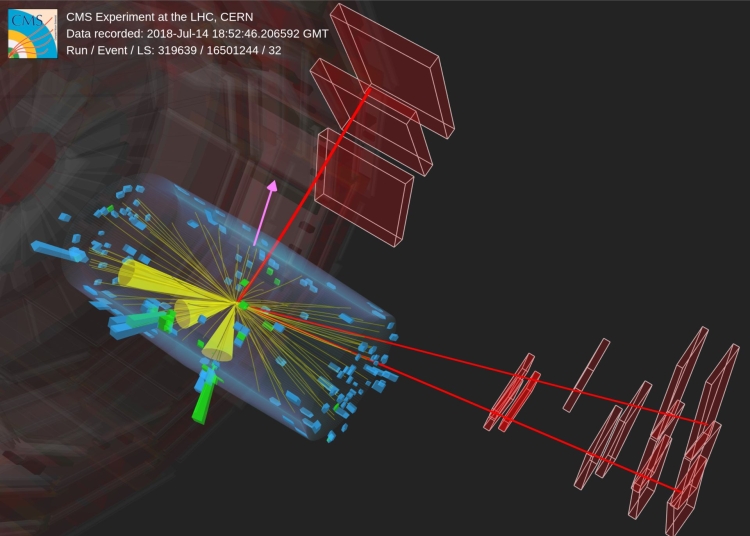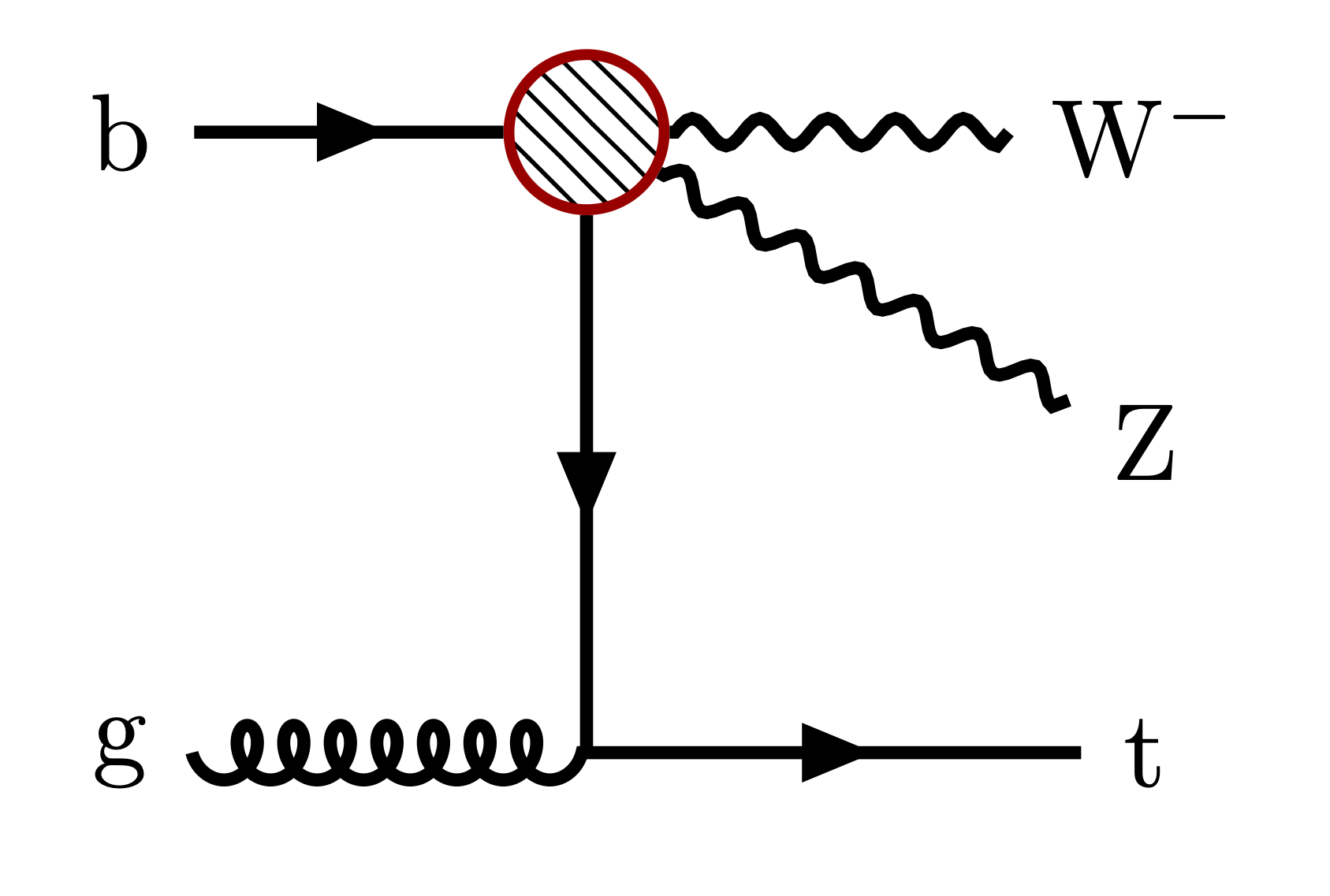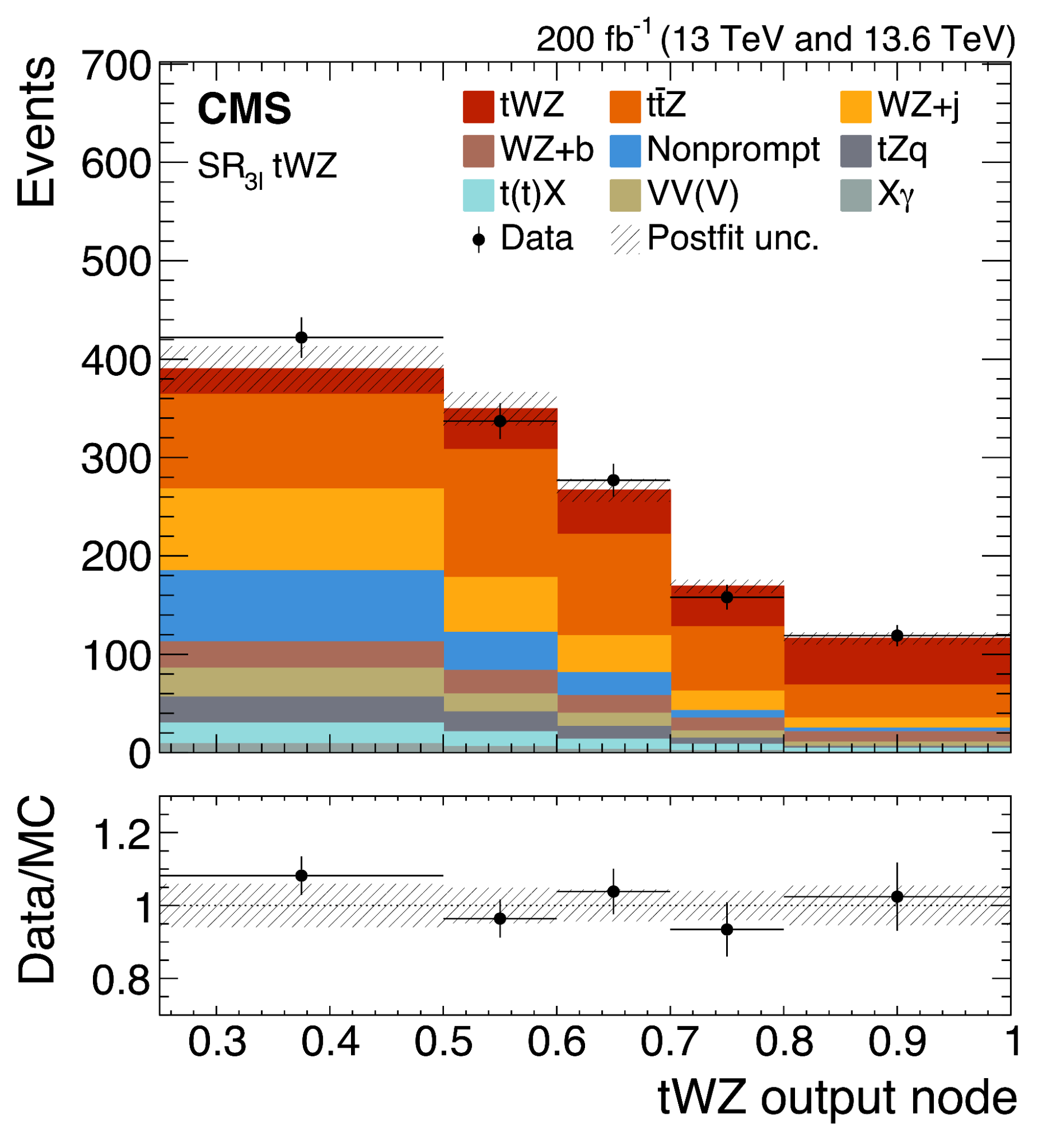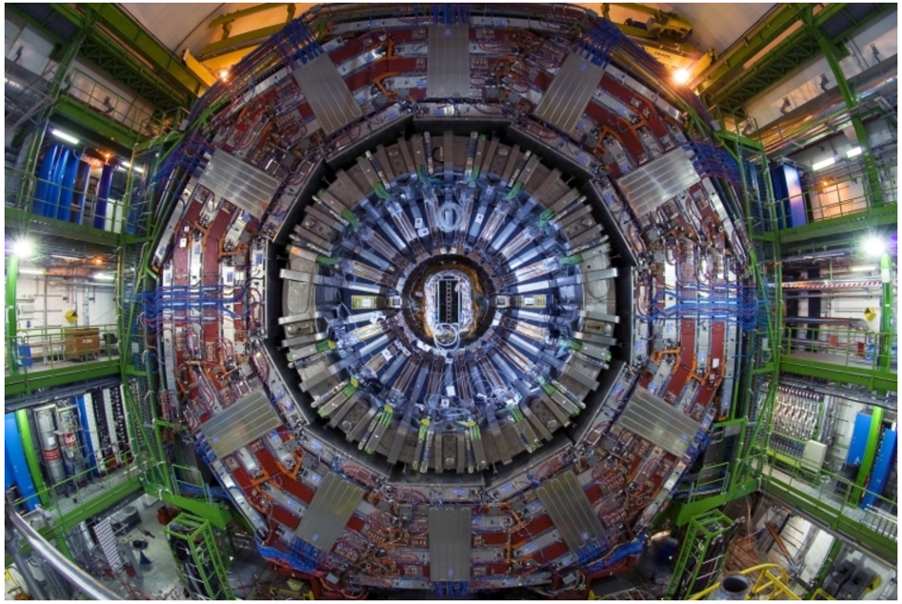
Using data collected from 2016 to 2023 and cutting-edge machine learning, CMS observes for the first time the creation of a top quark together with a W and a Z boson – a process so rare it occurs only once in a trillion proton-proton collisions!
The top quark is the most massive known elementary particle, having a mass larger than 170 times the proton mass. The origin of this mass is rooted within the Brout-Englert-Higgs (BEH) mechanism – Englert and Higgs received the 2013 Nobel Prize for proposing it. Amongst all known elementary particles, the strongest interaction of the Higgs field is with the top quark, making it a sensitive probe to study the nature of the Higgs field. The W and Z bosons, on the other hand, mediate the electroweak (EW) interaction, which is the unified theory of the electromagnetic and the weak forces. They obtain their large masses by sharing a part of their field with the Higgs field.
Physicists predicted that within the standard model, it is possible to produce a single top quark together with a W and a Z boson at the LHC, a process that is extremely rare and elusive. If it exists, this process, called tWZ production, can be used to study the EW interaction of the top quark and reveal the role of the Higgs field in it. Scientists from the CMS Collaboration have now observed tWZ production and have opened a new window into the study of the fundamental forces of nature.

Above: Schematic drawing of tWZ production. The W boson converts the incoming bottom quark into a top quark, which interacts with the Z boson. The red bubble represents the corresponding interaction, possibly with an unknown contribution.
The figure above shows a schematic drawing (Feynman diagram) of how tWZ production can occur. A measurement of tWZ production represents a significant challenge from both theoretical and experimental perspectives. Because it features similar final states as another rare process, the simultaneous production of a top quark-antiquark pair with a Z boson (ttZ production), specific treatment is required to distinguish these processes.
The tWZ process is one of the rarest standard model processes that can be observed with the current LHC data. Its rate of production is about seven times smaller than even that of ttZ, making it very hard to isolate and identify. “Because of its rarity and similarity with the ttZ process, observing tWZ production requires advanced analysis techniques involving state-of-the art machine learning”, says Alberto Belvedere from DESY, who is one of the main analysts in this analysis project.
Above: An event, recorded with the CMS detector, that shows the characteristic signature of tWZ production: three muons (red lines), missing transverse momentum (pink arrow), and three jets (yellow cones). The display is interactive and can also be viewed on a full, interactive page here.
We focused on events where three or four electrons or muons are produced, a hallmark signature of tWZ production. To better separate signal from the overwhelming background contribution, a transformer-based machine learning algorithm, similar to that used for large-language models, is used to separate the signal and the main background components. The result, shown in the figure below, demonstrates this separation.

Above: Distribution in the output score of the machine-learning algorithm, used to isolate the tWZ signal. The signal in dark red cumulates to the right, while background processes contribute more to the left.
Using a data set collected from 2016 to 2023, corresponding to 200 fb-1 of collision data, the CMS Collaboration has now identified this process with a statistical significance of 5.8 standard deviations, exceeding five standard deviations that are the gold standard for a scientific discovery. The measured rate of tWZ production is slightly above the prediction, about 2.3 standard deviations higher. Future data will reduce the uncertainty and clarify whether this is just a statistical fluctuation or the first hint of something beyond the known laws of physics. “If there are unknown interactions or particles involved, the observed deviation between the measured rate and the prediction would become rapidly larger with increasing energies of the outgoing particles, an effect that is unique to the tWZ process”, says Roman Kogler from DESY.
For now, the CMS Collaboration marks the first observation of a phenomenon so rare that it happens only once in trillions of proton-proton collisions. It is another reminder of the LHC’s ability to uncover nature’s most elusive secrets.
Written by: Roman Kogler and Alberto Belvedere, for the CMS Collaboration
Edited by: Muhammad Ansar Iqbal
Read more about these results:
-
CMS Publication (TOP-24-009): "Observation of tWZ production at the CMS experiment"
-
@CMSExperiment on social media: Bluesky - Facebook - Instagram - LinkedIn - TikTok - Twitter/X - YouTube

